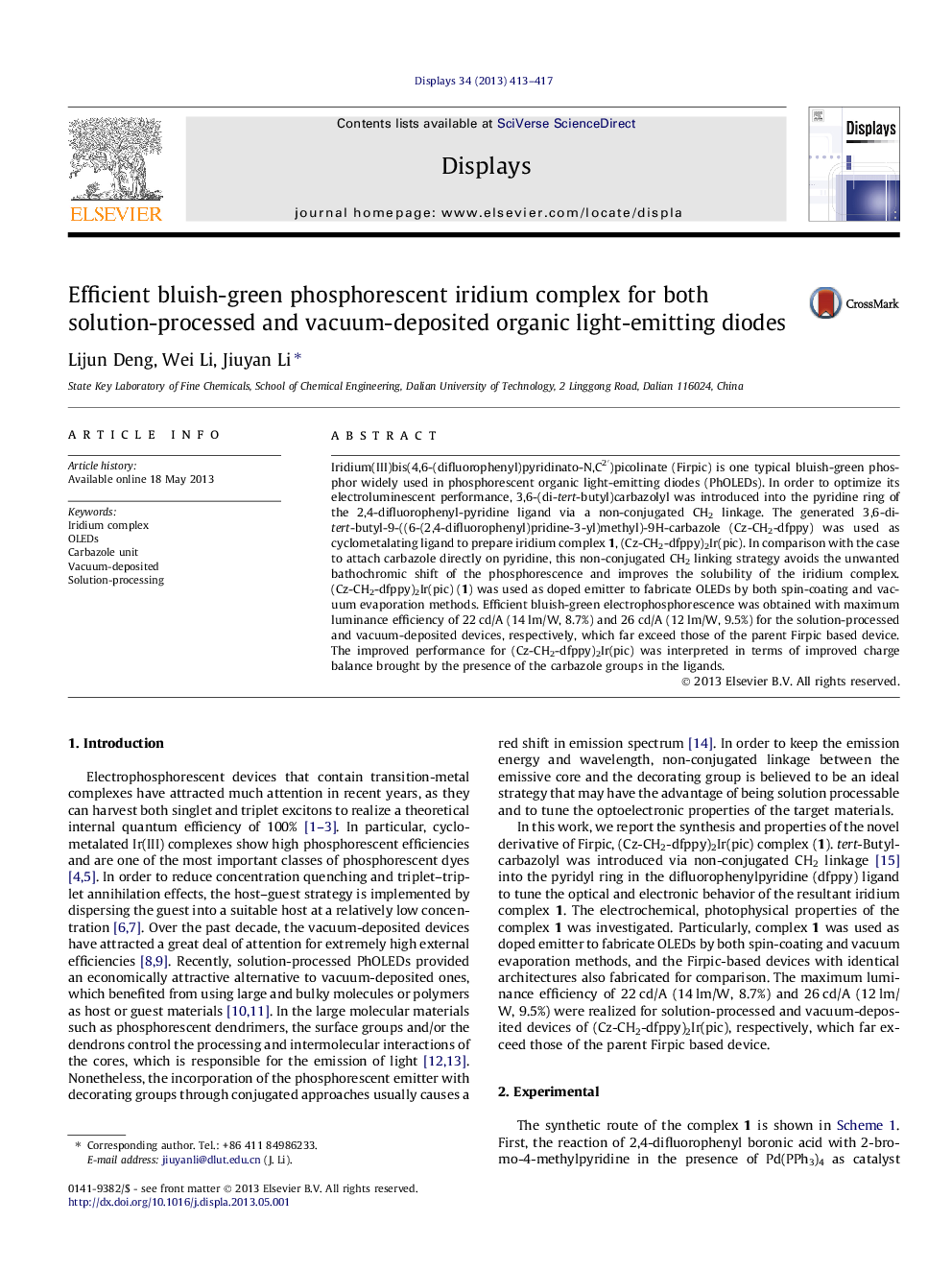| Article ID | Journal | Published Year | Pages | File Type |
|---|---|---|---|---|
| 10363099 | Displays | 2013 | 5 Pages |
Abstract
Iridium(III)bis(4,6-(difluorophenyl)pyridinato-N,C2â²)picolinate (Firpic) is one typical bluish-green phosphor widely used in phosphorescent organic light-emitting diodes (PhOLEDs). In order to optimize its electroluminescent performance, 3,6-(di-tert-butyl)carbazolyl was introduced into the pyridine ring of the 2,4-difluorophenyl-pyridine ligand via a non-conjugated CH2 linkage. The generated 3,6-di-tert-butyl-9-((6-(2,4-difluorophenyl)pridine-3-yl)methyl)-9H-carbazole (Cz-CH2-dfppy) was used as cyclometalating ligand to prepare iridium complex 1, (Cz-CH2-dfppy)2Ir(pic). In comparison with the case to attach carbazole directly on pyridine, this non-conjugated CH2 linking strategy avoids the unwanted bathochromic shift of the phosphorescence and improves the solubility of the iridium complex. (Cz-CH2-dfppy)2Ir(pic) (1) was used as doped emitter to fabricate OLEDs by both spin-coating and vacuum evaporation methods. Efficient bluish-green electrophosphorescence was obtained with maximum luminance efficiency of 22Â cd/A (14Â lm/W, 8.7%) and 26Â cd/A (12Â lm/W, 9.5%) for the solution-processed and vacuum-deposited devices, respectively, which far exceed those of the parent Firpic based device. The improved performance for (Cz-CH2-dfppy)2Ir(pic) was interpreted in terms of improved charge balance brought by the presence of the carbazole groups in the ligands.
Related Topics
Physical Sciences and Engineering
Computer Science
Hardware and Architecture
Authors
Lijun Deng, Wei Li, Jiuyan Li,
